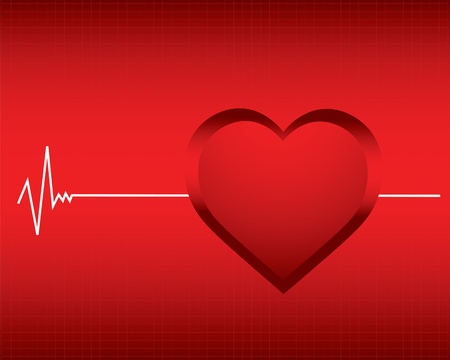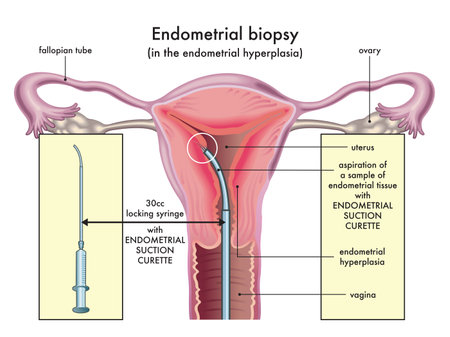1. Introduction to Cardiac and Pulmonary Rehabilitation
Cardiac and pulmonary rehabilitation are specialized programs designed to help people recover from heart and lung conditions. In the United States, these programs are widely recognized as essential parts of healthcare, supporting individuals as they regain strength, improve their quality of life, and lower their risk of future health problems. Let’s take a closer look at what cardiac and pulmonary rehab involve, the common conditions addressed, and why they matter so much in the U.S.
What Is Cardiac and Pulmonary Rehabilitation?
Cardiac rehabilitation focuses on helping people who have experienced heart-related issues such as heart attacks, heart surgery, or chronic heart disease. Pulmonary rehabilitation is for those with lung problems like chronic obstructive pulmonary disease (COPD), asthma, or after lung surgery. Both types of rehab include supervised exercise, education about healthy living, counseling, and support to help patients make lasting changes.
Common Conditions Addressed
| Rehabilitation Type | Common Conditions Treated |
|---|---|
| Cardiac Rehab | Heart attack, coronary artery disease, congestive heart failure, heart surgery recovery (bypass or valve surgery) |
| Pulmonary Rehab | COPD, emphysema, chronic bronchitis, interstitial lung disease, post-lung surgery recovery |
The Importance in U.S. Healthcare
In America, heart disease and lung disease are among the top causes of death and disability. Cardiac and pulmonary rehab programs not only help patients recover physically but also teach them skills to better manage their health over the long term. These programs can lead to fewer hospital visits, less medication use, and improved mental well-being. Insurance plans like Medicare often cover these services because they are proven to save lives and reduce healthcare costs.
Key Benefits at a Glance
- Improved physical fitness and stamina
- Better control of symptoms like shortness of breath or chest pain
- Education on managing medications and lifestyle changes
- Support from healthcare professionals and other patients
- Lower risk of future hospital stays or medical emergencies
How Programs Work in the U.S.
Most cardiac and pulmonary rehab programs in the U.S. are run by hospitals or specialized clinics. Patients usually attend sessions several times a week for a few months. A typical session includes monitored exercise (such as walking on a treadmill or using a stationary bike), nutrition advice tailored to American diets, stress management techniques like mindfulness or breathing exercises, and group discussions that reflect diverse backgrounds found across the country.
2. Core Components and Multidisciplinary Teams
What Makes Cardiac and Pulmonary Rehabilitation Unique?
In the United States, cardiac and pulmonary rehabilitation programs are built on three main pillars: exercise training, education, and behavior modification. These components work together to help people recover from heart or lung conditions, improve their quality of life, and reduce the risk of future health problems.
Key Elements of Rehabilitation Programs
| Component | Description | Who’s Involved? |
|---|---|---|
| Exercise Training | Personalized physical activity plans that safely increase strength, stamina, and heart-lung function. | Physical Therapists, Exercise Physiologists |
| Education | Information sessions on topics like medication management, nutrition, stress reduction, and self-care strategies. | Nurses, Dietitians, Health Educators |
| Behavior Modification | Support for adopting healthier habits—such as quitting smoking, managing stress, or staying active daily. | Counselors, Psychologists, Social Workers |
The Role of the Multidisciplinary Team
A standout feature of American rehab programs is the team approach. Here’s how different professionals contribute:
- Physical Therapists: Design safe exercise routines tailored to each patient’s needs and monitor progress.
- Nurses: Track vital signs during sessions, provide education on medications and symptom management, and act as a resource for questions about recovery.
- Respiratory Therapists: Teach breathing techniques for those with lung issues and help manage oxygen therapy.
- Dietitians: Create meal plans that support heart and lung health, considering any other medical needs.
- Counselors & Social Workers: Offer emotional support and practical help with lifestyle changes or navigating insurance coverage.
The Patient-Centered Approach
No two patients are the same. Rehabilitation teams create individualized treatment plans based on each person’s medical history, goals, and preferences. Regular assessments ensure that the program adapts as the patient progresses.
The Importance of Ongoing Support
Recovery doesn’t stop after leaving the hospital. Outpatient cardiac and pulmonary rehab centers across the U.S. offer continued guidance and group classes to keep patients motivated long-term. This ongoing care helps prevent setbacks and empowers people to take charge of their health in everyday life.

3. Typical Patient Journey in U.S. Programs
Patient Referral Process
In the United States, most patients enter cardiac or pulmonary rehabilitation after a healthcare provider refers them following a heart or lung event, such as a heart attack, surgery, or chronic respiratory condition diagnosis. Referrals often come from cardiologists, pulmonologists, or primary care doctors. Sometimes, hospital discharge planners or case managers help ensure the patient gets connected to a rehab program before leaving the hospital.
Initial Assessment
The patient’s journey begins with an initial assessment conducted by the rehab team. This appointment usually includes:
- Reviewing medical history and recent events
- Physical exam and basic measurements (weight, blood pressure, heart rate)
- Functional capacity tests (like walking tests or treadmill assessments)
- Mental health screening and social needs evaluation
- Discussion of current medications and lifestyle habits
Goal-Setting With Patients
After the initial assessment, the rehab team works with each patient to set personal goals. Goals might include improving exercise tolerance, learning how to manage symptoms, returning to work or daily activities, and adopting healthier lifestyle habits. Goal-setting is tailored to what matters most to the individual patient.
The Structure of Outpatient and Inpatient Rehab Programs
| Outpatient Rehab | Inpatient Rehab | |
|---|---|---|
| Location | Clinic or hospital-based center; patients travel for scheduled sessions | Hospital stay; therapy occurs during hospitalization after an event or surgery |
| Session Frequency | Typically 2–3 times per week for 6–12 weeks | Daily sessions throughout hospital stay (usually shorter duration) |
| Main Focus Areas | Supervised exercise training Education on risk factor management Lifestyle coaching Counseling and support groups Nutritional guidance |
Early mobilization Basic functional training Preparation for transition home Education for patient and family |
| Team Members Involved | Nurses, physical therapists, exercise physiologists, dietitians, respiratory therapists (for pulmonary), psychologists/social workers | Nurses, physical/occupational therapists, case managers, doctors |
| Main Goal | Long-term recovery and self-management skills for ongoing heart/lung health | Stabilization and safe discharge planning; starting the recovery process early |
What Patients Can Expect During Sessions
- Exercise: Activities are closely monitored and adjusted to each person’s abilities.
- Education: Classes or one-on-one counseling about medication use, nutrition, stress management, quitting smoking, and more.
- Psycho-social Support: Emotional support is provided through counseling or peer groups to help patients cope with lifestyle changes.
- Progress Tracking: Regular check-ins help track improvement toward goals and adjust the program as needed.
The Patient Journey: A Quick Overview Table
| Step in Journey | Description/Action Point |
|---|---|
| Referral to Program | Your doctor refers you to cardiac or pulmonary rehab after an event or diagnosis. |
| Initial Assessment | The team reviews your health status and sets a baseline for progress. |
| Personalized Goal-Setting | You work with your team to set goals that matter to you. |
| Treatment Phase (Outpatient/Inpatient) | You attend structured sessions focused on exercise, education, and support. |
| Ongoing Evaluation | Your progress is reviewed regularly; your plan is adjusted as needed. |
This step-by-step approach helps patients achieve better heart and lung health by combining medical supervision with education and personalized care.
4. Insurance, Access, and Health Equity
Coverage by Medicare and Private Insurers
In the United States, insurance plays a key role in making cardiac and pulmonary rehabilitation services available to patients. Most people access these programs through either Medicare or private health insurance. Below is a simple comparison of coverage:
| Type of Insurance | What’s Covered? | Limitations |
|---|---|---|
| Medicare | Covers both cardiac and pulmonary rehab for qualifying conditions; typically includes up to 36 sessions (may extend if needed) | Requires a referral from a doctor; some copays may apply |
| Private Insurers | Most cover similar rehab programs, but benefits and session limits vary widely | Pre-authorization might be needed; out-of-pocket costs differ by plan |
Challenges with Access in Rural and Underserved Communities
While insurance coverage is an important step, not everyone can easily access cardiac and pulmonary rehabilitation. People living in rural areas or underserved communities often face barriers like:
- Distance to Rehab Centers: Facilities may be far away, making regular attendance difficult.
- Lack of Transportation: Limited public transit options can prevent patients from reaching appointments.
- Fewer Healthcare Providers: Some areas simply don’t have enough specialists or rehab centers.
- Cultural and Language Barriers: These can make it harder for patients to understand their options or feel comfortable seeking care.
Efforts to Improve Health Equity
The healthcare system is working on ways to make cardiac and pulmonary rehab more fair and accessible for everyone. Some current efforts include:
- Telehealth Programs: Virtual rehab sessions are being offered so patients can participate from home, especially important for those in remote areas.
- Community Outreach: Local organizations are educating communities about the benefits of rehab and helping connect people with resources.
- Bilingual Staff and Materials: Providing information and support in multiple languages helps reach diverse populations.
- Financial Assistance Programs: Some hospitals offer sliding scale fees or help with transportation costs for those who qualify.
The Bottom Line on Access and Equity
Insurance coverage is only part of the solution—addressing physical, financial, and cultural barriers is essential to ensure all Americans benefit equally from cardiac and pulmonary rehabilitation programs. Ongoing efforts continue to bridge these gaps so that everyone has a fair chance at recovery and better health.
5. Outcomes, Challenges, and Future Directions
Overview of Clinical Outcomes in Cardiac and Pulmonary Rehab
Cardiac and pulmonary rehabilitation programs in the United States have shown clear benefits for people recovering from heart and lung conditions. These programs help improve physical fitness, reduce hospital readmissions, and enhance overall quality of life. Patients often report being able to do more daily activities, feeling less shortness of breath, and having better mental health.
| Outcome | Cardiac Rehab | Pulmonary Rehab |
|---|---|---|
| Exercise Capacity | ↑ Improved endurance and strength | ↑ Improved walking distance and stamina |
| Hospital Readmissions | ↓ Fewer return visits after rehab | ↓ Reduced exacerbations and ER visits |
| Mental Health | ↑ Less anxiety and depression | ↑ Improved mood and confidence |
| Daily Functioning | ↑ Easier to perform daily tasks | ↑ More independence in daily life |
Barriers to Participation in Rehab Programs
Despite the proven benefits, many Americans face challenges when it comes to joining or sticking with cardiac and pulmonary rehab programs. Common barriers include:
- Lack of Transportation: Many patients find it difficult to travel to rehab centers multiple times a week.
- Cost and Insurance Issues: Not all insurance plans fully cover rehab, leading to out-of-pocket expenses.
- Lack of Awareness: Some patients are not informed about the availability or importance of these programs by their healthcare providers.
- Cultural and Language Barriers: Diverse communities may feel less comfortable participating due to language differences or cultural preferences.
- Work or Family Commitments: Busy schedules can make attending regular sessions challenging.
The Role of Technology: Tele-Rehab Solutions
The COVID-19 pandemic accelerated the adoption of tele-rehabilitation (tele-rehab) across the country. Tele-rehab uses video calls, mobile apps, and remote monitoring devices so patients can participate in guided exercise sessions and receive education from home. This approach helps overcome transportation issues, offers more flexibility for busy families, and increases access for those living in rural areas.
Key Features of Tele-Rehab in the U.S.
- Virtual Exercise Supervision: Patients follow customized exercise plans while therapists monitor progress remotely.
- Educational Modules: Online resources teach about managing heart or lung conditions at home.
- User-Friendly Apps: Simple interfaces track symptoms, medication use, and activity levels.
- Family Involvement: Loved ones can join sessions for support and encouragement.
Innovations Shaping the Future of Rehab in America
The future of cardiac and pulmonary rehabilitation looks promising with several new trends emerging:
- Wearable Technology: Smartwatches and fitness trackers provide real-time feedback on heart rate, oxygen levels, and activity, helping both patients and providers monitor progress outside the clinic.
- Culturally Tailored Programs: More programs now offer materials in multiple languages and adapt sessions to fit different cultural backgrounds, making rehab more accessible for all Americans.
- Community-Based Approaches: Partnerships with local gyms or community centers bring rehab closer to where people live, making it easier to attend regularly.
- Mental Health Integration: Recognizing the close link between physical and emotional health, some programs now include counseling or peer support groups as part of rehab services.
- Payer Innovations: Insurance companies are starting to offer better coverage for both traditional and tele-rehab options as evidence grows about their long-term cost savings.
The Road Ahead for American Rehab Programs
The combination of medical advances, technology adoption, and greater awareness is paving the way for more Americans with heart or lung conditions to benefit from comprehensive rehabilitation programs. Addressing barriers to participation—while continuing to innovate—will be key to improving outcomes nationwide.


